A Comprehensive Guide for Brands
Navigating the world of dietary supplements can be a complex task for consumers. As a supplement brand, it is crucial to provide clear, informative, and accurate labels that enable customers to make informed decisions about the products they purchase.
This comprehensive guide is designed to help brands and product managers better understand the essential elements of a supplement label and how to create a label that instills trust, credibility, and brand loyalty in their customer base. Let’s first explore the reasons behind the importance of a label.
Understanding the Importance of a Supplement Label
Consumer Trust and Brand Credibility
Consumers rely on supplement labels to make informed decisions about their health and wellness. By providing transparent, accurate, and comprehensive information, brands can build trust and credibility in the minds of their customers. A meticulously designed label reflects the brand’s commitment to quality and customer satisfaction.
Regulatory Compliance
Complying with the guidelines and regulations established by the Food and Drug Administration (FDA) and the Federal Trade Commission (FTC) is imperative for supplement brands. Compliance not only protects brands from potential legal consequences, but it also establishes a baseline for the quality and safety of products in the marketplace.
Educating Consumers for Informed Choices
A well-designed supplement label empowers consumers to make informed choices about the products they use. By providing essential information about ingredients, dosages, and potential benefits, supplement brands can help consumers find the right product to meet their unique health and wellness needs.
Essential Information to Include on a Supplement Label
An effective supplement label must include a variety of critical information that is easily accessible and understandable for consumers. This section outlines the essential elements that should be present on every supplement label.
Product Name and Form
Clearly display the product’s name and specify the form it takes, such as liquid, capsules, tablets, or powder. This information helps consumers quickly identify the product and understand how it is meant to be consumed. Additionally, it may be beneficial to include a brief description of the product’s intended use or benefits, which can help customers make informed decisions about the suitability of the supplement for their specific needs.
Brand Name and Contact Information
Prominently display the brand name and provide contact information, such as a website, email address, or phone number. This enables consumers to reach out with questions or concerns and demonstrates a brand’s commitment to customer support. In today’s digital age, consider providing links to social media profiles, which can help build a stronger connection with customers and create opportunities for engagement and feedback.
Serving Size and Servings per Container
Indicate the recommended serving size and the total number of servings per container. This information helps consumers understand how much of the product they should consume and how long it will last. To further assist customers, consider including a visual representation of the serving size, such as a teaspoon or scoop, to ensure proper dosage and reduce potential confusion.
List of Active and Inactive Ingredients
Clearly list all active and inactive ingredients, along with their amounts. This transparency allows consumers to assess the product’s quality and suitability for their needs. Where applicable, include information about the sources of the ingredients, such as whether they are plant-based or synthetic. Furthermore, consider highlighting any patented or trademarked ingredients, which can signal a higher level of quality and research-backed efficacy.
Nutrient Content and Daily Value Percentages
Provide information about the nutrient content of the product, including vitamins, minerals, and macronutrients such as protein, fat, and carbohydrates. Include the percentage of the recommended daily value (DV) for each nutrient, helping consumers gauge their intake in the context of their overall diet. For added clarity, consider using graphical elements like charts or icons to make this information more visually accessible and easy to understand at a glance.
Allergen Information and Warnings
Include any allergen information or warnings relevant to the product. This information is vital for consumers with food sensitivities or allergies and can help prevent adverse reactions. In addition to listing common allergens, consider noting if the product is manufactured in a facility that also processes allergens, as cross-contamination can still pose risks to sensitive individuals.
Directions for Use and Storage
Provide clear directions for using and storing the product. This information ensures that consumers consume the supplement safely and maintain its quality and efficacy. Outline the optimal conditions for storage, such as temperature and humidity, and include any special instructions for opening or dispensing the product. If the supplement requires refrigeration after opening or has specific handling instructions, be sure to emphasize this information.
Lot Number, Expiration Date, or Manufacture Date
Display the lot number, expiration date, or manufacture date of the product. This information helps consumers determine the product’s freshness and shelf life, ensuring they are using a safe and effective supplement. To aid in visibility and comprehension, consider using color-coding or other visual cues to emphasize these crucial details. Additionally, make sure that the date format is clear and consistent to avoid any confusion.
Optional Information to Enhance Consumer Experience
In addition to the essential information outlined above, supplement labels can include optional elements that enhance the consumer experience and provide further value, such as:
- Certifications and seals, such as USDA organic, non-GMO, etc
- Structure-function claims that describe potential benefits of a supplement in a legally compliant manner
- QR codes or URLs for more detailed information about the product
- Additional allergen and dietary restriction information, such as soy-free, gluten-free, or vegan to help consumers align with their personal dietary needs and preferences
- Supplement interactions and contraindications to alert consumers to any potential issues with medications or long-term medical conditions
- Educational resources and tips for usage to maximize the product’s benefits
Design and Layout Considerations for Supplement Labels
A well-designed label is not only informative but also visually appealing and easy to read. Consider the following design elements when creating a supplement label.
Legible Font Sizes and Styles: Choose fonts that are clear and easy to read, even at small sizes. Ensure that essential information is displayed in a larger or bold font for maximum visibility.
Color Schemes and Contrast for Readability: Select color schemes that provide adequate contrast between the text and background, making the label easy to read under various lighting conditions.
Visual Hierarchy and Organization: Organize the information on the label in a logical and visually appealing manner, using headings, bullet points, or other design elements to guide the eye and make the label easy to navigate.
Using Icons and Symbols for Quick Information Access: Incorporate icons or symbols that quickly convey essential information, such as allergen warnings or certifications. This visual shorthand can help consumers identify critical details at a glance.
Using External Packaging: If you are working with a medium with spacial constraints, such as a small liquid bottle, print information on the box where you may have more surface area for text and visuals. You could also insert a paper or small booklet with important information in the box alongside the supplement.
Staying Current with Regulatory Changes and Industry Best Practices
Maintaining up-to-date knowledge of FDA and FTC guidelines is crucial for supplement brands. Engage with industry associations and participate in continuing education and training to stay informed about regulatory changes and best practices in the supplement industry.
Partner with a Supplement Manufacturer and Packaging
At Yellow Emperor, we’re the proud west coast liquid supplement manufacturing partner for innovative supplement brands. We support your operations with the production and packaging backbone that you need to run the business you have always dreamed of owning without sacrificing product quality.
To learn more about our manufacturing and packaging capabilities, contact us today.







